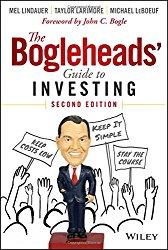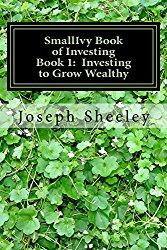(This is part of a series of articles to teach those who are new to investing how to invest. To find other articles in this series, choose “Beginner Investing Class” under “Investing” in the menu at the top of the page. If you have questions or you’d like a topic to be covered, please leave a comment at the bottom of the post.)
Perhaps you’ve tried baking and found an all-purpose, master bread dough recipe. This is a basic recipe that can be shaped in a variety of different ways, perhaps to make loaves of bread, cinnamon rolls, dinner rolls, and maybe even morning pastries. Perhaps this master dough could even be used to create the crust for a pizza.
To start out our lessons on learning to invest, we’ll begin with a basic mutual fund investment portfolio and build from there. Think of this as a master dough for your investing needs. This is a general portfolio that would be suitable for almost anyone who was planning to invest for at least five years before needing the money. Once we introduce the basic portfolio, we’ll then talk about why it is designed the way that it is, then tweak it a bit to show how you can adjust it to meet your particular needs.
So what about people who need the money in less than five years? Investing involves taking a calculated risk with your money to get a higher return than you could with things like bank CDs and savings bonds. In our case, we’ll be investing in stocks, corporate bonds, and real-estate portfolios. Part of investing is to put the odds well in your favor. One of the easiest ways to do this is to invest for long periods of time. Over less than a five-year period, history has shown that stocks, bonds, and real-estate can produce a positive or negative return, and these returns can vary widely. Over a period of at least five years, there has almost always been at least positive return. Over periods of fifteen years or longer, there has always been a positive return and a return averaging about 12-15% per year for stocks. Because we’re talking about investing, holding periods of at least five years are expected. If you need the money before that, bank CDs or some sort of government bonds are the way to go since their returns are predictable, if also boring and low.
Before we go too much further, let me highly recommend that you pick up a copy of The Bogleheads’ Guide to Investing. This book will go into a lot of the details behind how mutual funds work and why you should buy certain types funds (index funds). It also gives great advice on things like life insurance. If you buy a copy by clicking on the book cover below and going through Amazon, it won’t cost you anything more than it would if you bought it elsewhere, but I’ll get a couple of dollars from Amazon. If I get enough of these commissions, it keeps me wanting to write more great articles like this one instead of going fishing, so it is really in your best interest too if you like good free web content. Just saying.

As promised, we’ll start out by providing the investments in the basic, master portfolio. This is the “what,” given before the “why” and the “how.” Those details will come later. Please don’t confuse the portfolio (which is a set of investments) with an investment account (which is the wrapper that holds the portfolio). The basic, master portfolio could be a portfolio held in a standard brokerage account, in a retirement account such as a 401k, 403B, or an Individual Retirement Account (IRA), or it could be held in an Educational Savings Account (ESA) or a Health Savings Account (HSA). Each of these accounts is just a place to hold the investments. It is not an investment itself.
If this is confusing, think of the accounts like types of automobiles and the investments like passengers. The investment account functions in some fashion and has certain rules for its use, but you can putanyassortment of investments into the account, just as you could put any combination of passengers into a given car, truck, dune buggy, or minivan as long as they would f0it. Different types of accounts are generally suitable for different purposes, just as different vehicles have different uses. You would not use a retirement account when you were 23 years-old, for example, to save up money you want to use to buy a house in ten years just as you wouldn’t use a sports car to drive down a jeep trail to a campsite. Certain accounts are also more suitable for certain types of investments. You might not want to put a high-yield bond fund into a standard brokerage account because of the taxes you would pay, for example, just as you might not want to put your toddler with a box of nuggets and a milkshake in your Corvette.
The basic, master portfolio is composed as follows:
20% General Large-Cap US Stock Index Fund
20% General Small-Cap US Stock Index Fund
20% International Stock Index Fund
20% General US Bond Index Fund
20% US Real-Estate Investment Trust (REIT) Fund
Each of these investments is what is known as a mutual fund. With a mutual fund, a group of people pool their money together and have a professional investment manager invest the money for them, with everyone in the mutual fund owning a portion of the investments in proportion to the amount of money they invest. For example, let’s say that you and the 500 people at your work each put money into an envelope and then hired someone to buy a set of investments with the money. If the envelope contained $100,000, perhaps the manager would buy a portfolio consisting of ten different stocks with $10,000 invested in each. If you had put $1,000 into that envelope, you would own 1% of the portfolio, meaning you would have $100 invested in each of the stocks. If the stocks in the portfolio then went up and the portfolio was now worth $150,000, your portion of the investment would be worth $1500.
Furthermore, each of these is an index fund. We’ll get into what index funds are and why you want them in later articles. Let’s just say for now that with an index fund, rather than having a manager choose investments for you, he has a specific list of what she is supposed to buy. This makes it really easy since the manager doesn’t need to spend time picking stocks and doing all sorts of research to do so, which makes the cost to the investors low. Realize that the salary for the mutual fund managerand all of the travel and things she needs to buy to do research comes out of the fund, so the more you need to pay the manager, the more money gets sucked out of the fund each year.
So What’s in this Basic, Master Portfolio?
The master portfolio is made up of five different funds, each investing in different things. We’ll get into why we spread the money out like this later, but for now let’s just say it is for something called diversification, which is a way of reducing your risk. Investing is all about maximizing your returns while making it very unlikely that you will lose money.
The large-cap US stock fund invests in big companies headquartered in the United States. These are household names like Apple, Alphabet (Google), Amazon, Procter and Gamble, Home Depot, Wal-Mart, and McDonald’s. Some large-cap funds have the words “large-cap” right in their titles. An S&P 500 fund, which invests in a list of stocks called the “S&P 500,” is a very common large-cap US stock fund.
The small-cap US stock fund invests in little companies that you’ve probably never heard of, but some of which you will hear lots about in a few years. These are the little, fast-growing companies. Some of these companies will make you a lot of money (think if you’d bought Amazon and Ebay back in the early 1990’s). Many others will disappear and never be heard of again (think of Pets.com and WebVan, also from the mid-1990’s). On average, you’ll make money by investing in a whole bunch of these small companies since those that become Amazon will make up for those that become WebVan. The Russell 2000 is a commonly used list of small-cap US stocks.
The international stock fund buys stocks in non-US companies. This could include companies based in countries in places like Europe, Asia, and South America. (Yes, for our neighbors to the north, it could also be Canadian companies.) It might also mix in a few developing countries in Africa or Central America where there is a bit more risk because the political system is a bit unstable, but there could be a huge reward if things work out. For example, there are a huge amount of valuable resources in the Congo, but there have been many civil wars and coups in the past. You might have a company there that is very profitable, but then a group of rebels take over the headquarters and take all of the equipment, making your investment worthless.
The bond fund buys bonds, which are loans made to companies and government entities. Because you receive interest payments from these loans, and because most of the loans will be paid back if you wait long enough, bonds are generally less risky than stocks if you hold them for a long period of time. Because they are less risky, however, your potential returns will be less than they will be for stocks. You, therefore, want to have some bonds, but not all bonds. 20% of your portfolio in bonds is a good starting point that can be adjusted up or down, depending on the amount of risk you are willing and able to take, plus the amount of time you have before you’ll need the money.
Finally, the REIT buys a set of properties. For example, REITs buy groups of office buildings, apartment buildings, malls, and even storage sheds and cell phone towers. Chances are, the shopping mall near you and that big office building in downtown are owned by an REIT. REITs both collect rents and sell properties for a profit as the land and buildings increase in value. Because they are radically different from stocks or bonds, they provide yet another leg to your portfolio. (Again, we’re doing that “diversification” thing.)
So there you have it – the master portfolio. In the next article, we’ll break it down a little more and explain why we’ve made the choices we’ve made. We’ll then talk about ways that you can adjust this basic portfolio to meet your risk tolerance and your needs.

Want all the details on using Investing to grow financially Independent? Try The SmallIvy Book of Investing.
Have a burning investing question you’d like answered? Please send to [email protected] or leave in a comment.
Follow on Twitter to get news about new articles. @SmallIvy_SI
Disclaimer: This blog is not meant to give financial planning or tax advice. It gives general information on investment strategy, picking stocks, and generally managing money to build wealth. It is not a solicitation to buy or sell stocks or any security. Financial planning advice should be sought from a certified financial planner, which the author is not. Tax advice should be sought from a CPA. All investments involve risk and the reader as urged to consider risks carefully and seek the advice of experts if needed before investing.
